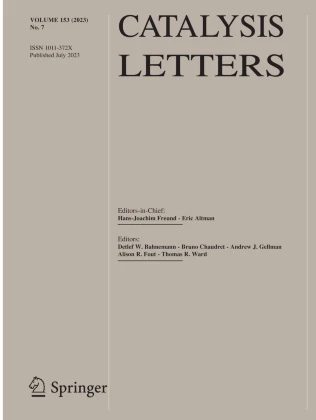Synergistic Regulation of Rare Earth and Noble Metal Promoters on Ni-based Bifunctional Materials for Enhanced CO2 Methanation Performance and Reaction Mechanism
Abstract
With the increasing severity of global carbon emissions, promoting the resource utilization of carbon dioxide (CO2) has emerged as the key strategy to address climate change. This study developed Ni-based dual-functional catalysts for CO2 methanation and introduced various additives (La, Pr, and Ir) to enhance catalytic efficiency. Experimental results indicated that all modified catalysts exhibited high methane selectivity (> 95%) during CO2 methanation. Among them, the Pr-DFM material demonstrated a 135% increase in methane yield under anoxic conditions compared to the unmodified material. Ir-DFM exhibited excellent anti-oxidation performance at 300 °C, maintaining high catalytic activity after ten cycles. In situ, Fourier transform infrared spectroscopy analysis revealed that the CO2 conversion pathway for Ir-DFM followed the formate pathway and maintained a stable reaction under oxidative conditions. This study improved the CO2-to-methane conversion efficiency by modifying Ni-based dual-functional materials with different additives, with Ir-DFM exhibiting exceptional stability and CO2 adsorption-catalysis performance. It offers novel catalyst design concepts for CO2 resource utilization and establishes a theoretical framework for optimizing and applying future catalysts.
Graphical Abstract

 求助内容:
求助内容: 应助结果提醒方式:
应助结果提醒方式:


